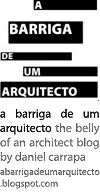One day all critics will be supermodels
Published Tuesday, December 15, 2009.
Kneel, you middlebrow old philistine you!
Pedro Gadanho reflects upon the rise of the middlebrow as a representative symptom of the digital age. The digital landscape of social networks and blogs provided new grounds for the ascension of unaccredited participations in the realm of specific, once closed, fields of knowledge. It would be wise, however, to consider the differences between the cult of the amateur and a wider notion of open source culture, and its likely implications to a new paradigm of architectural criticism.
One of the first questions to be asked is whether the internet is a platform for accreditation of what is to be considered a relevant form of practice. To that regard, one could say that what makes digital media so effective is also what afflicts it the most. The most successful blogs are aggregators of information, aspiring to provide their readers with the latest eye-candy available. If you follow some of them on your regular feed reader you’ll realize it takes only minutes until the latest press release gets published in a competition to see who’s first. That said, most of these blogs are not really aiming to contribute to a critical debate about architecture.
On the other hand you’ll find many blogs out there trying to do just that. And although most of them have much less visitors, they probably reach an audience that’s actually interested in reading what they have to say, instead of merely browsing through the visual gimmick of the day.
In the chaotic sea of web information, the user becomes the editor and the critic. It’s up to the reader to establish its own criteria of what is relevant. Subjectivity becomes the key, as one cannot be a neutral recording machine of the infinite stream of information. So even though subjectivity establishes a problem of knowledge, it’s our own personal filter that allows one not to sink in irrelevant details and observations, establishing a sense of what is in fact relevant and important.
What needs to be questioned then is not the role of these digital tools as «platforms aiming to reveal yet another potential claim to stardom», but what established circles of architectural knowledge are doing to provide an alternate kind of critical judgement. The real drama is not the ascension of the middlebrow but the fall of the highbrow in our current world of academic inflation. Many academies – particularly in our own southern European scene – have become contributors to a general culture of intellectual acknowledgment: something is considered respectable for the mere fact that it is recognizable within the codes, languages and typologies of its own mentors.
Since traditional printed media has customarily been closer to academic sources of knowledge, they’ve often become supporters to a narrow view of what is relevant, with an antagonistic but just as shallow approach to what is considered middlebrow architecture. And so you’ll find established architecture critics despising Bjarke Ingels as they reveal the utmost indulgence towards the latest whimsies of Zaha Hadid. The highbrow despises the star-system but, just as much, acknowledges the architect over the architecture.
This is so evident that you can pretty much guess what the establishment will say about any design from a reputable figure. When was the last time we read something original about Álvaro Siza, Souto Moura, Paulo Mendes da Rocha, just to name a few?
Highbrow critics will need to muster the bravery to go beyond the obvious if they want to reclaim their significance in the new landscape of information overload. The problem is that once you journey off the beaten track of thinking, chances are you’ll not be making many friends in the establishment. Thinking outside the box comes at a price not many are willing to pay. And if that’s the case, well then, I rather stick with blogs instead.
ENGLISH EDITION
The English-only edition of the blog A Barriga de um Arquitecto is no longer being updated. Please visit the main page to access new content, additional information and links.
ARCHIVES | ARQUIVO
September 2008 October 2008 November 2008 December 2008 January 2009 February 2009 March 2009 April 2009 May 2009 June 2009 July 2009 August 2009 September 2009 October 2009 November 2009 December 2009 January 2010 February 2010 March 2010 April 2010 May 2010 June 2010 July 2010 August 2010 November 2010 January 2011 February 2011 March 2011 June 2011 July 2011 October 2011 December 2011

I'm really happy that, in the midst of quantity, it is still possible to set off a discussion about quality. But just as, at BIARCH, I heard young bloggers ragging against acriticality by wanting to throw away the baby with the bath water, I also agree that ultimately judgement is on the eye of the beholder. No one is obliged to pay attention to garbage, although emptiness can be sometimes highly attractive. On the other hand, you say "The real drama is not the ascension of the middlebrow but the fall of the highbrow in our current world of academic inflation." Right, but is this really a drama or a blessing? I will certainly take some time to enter some productive dialogue with you asap in future posts...
Dear Author eng-abarrigadeumarquitecto.blogspot.com !
Between us speaking, I so did not do.